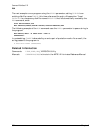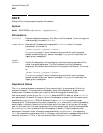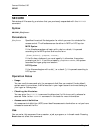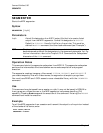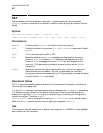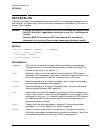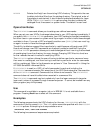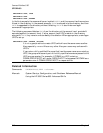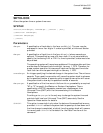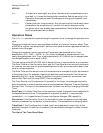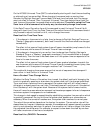
542 Chapter 7
Command Definitions S-SO
SET
SET
Defines elements of the command interpreter. It also allows a job using a spooled
$STDLIST to mark its standard list device for deletion when the job terminates. (Native
Mode)
Syntax
SET[ STDLIST={ DELETE | SAVE } ] [;MSG={ON | OFF}]
[ECHO={ ON| OFF}][ ;SPEED={ 300 | 1200 | 2400 | 4800 | 9600 | 19200 | 19.2K}]
Parameters
DELETE Flags the job's $STDLIST for deletion at job termination.
SAVE Cancels the effect of a previous SET STDLIST=DELETE command. Default
is SAVE.
ECHO Turns terminal echoing ON or OFF.
MSG Specifies whether or not TELL messages are displayed on the user's
terminal. MSG=OFF prevents TELL messages from appearing on the
terminal. WARN messages override MSG=OFF and will appear on the
terminal. (This parameter provides the same function as the SETMSG
command.)
SPEED Specifies the terminal's data transmission rate, within the upper and
lower bounds outlined above. The user is responsible for manually
changing the terminal's speed setting. (This parameter provides the same
function as the SPEED command.)
Operation Notes
The SET command specifies several elements of the command interpreter including the
terminal echo and baud rate.
In a job, the SET command can be placed anywhere between the JOB and EOJ statements.
It is most practical to place it at the end of a job stream since the command does not
execute if the job fails. $STDLIST then prints, allowing you to study your listing and to
locate the problem. The effect of a SET
STDLIST=DELETE can be reversed by entering SET STDLIST=SAVE into the job stream.
Note that the SET command works only on jobs with a spooled $STDLIST.
Use
This command may be issued from a session, job, program, or in BREAK. Pressing Break
has no effect on this command.



